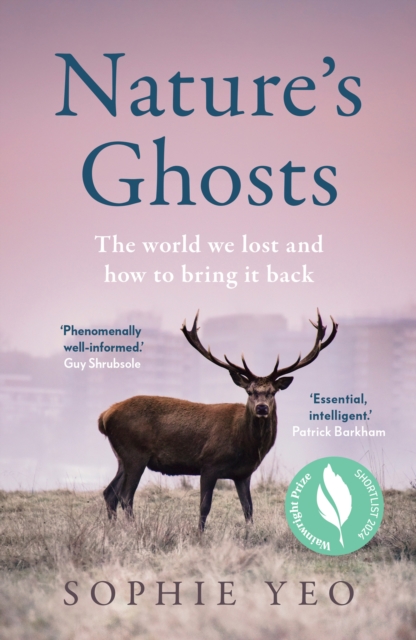Why nature conservationists must pay attention to the past: A Blog by Sophie Yeo
Guest
To mark the recent publication of Sophie Yeo's Nature's Ghosts, we're thrilled to share this wee blog post by her!
There is a tension at the heart of nature conservation.
Environmentalists focus on the future. Their talk is of future generations, the future of the planet. Recognising the irreversible damage caused by humans, their efforts are on letting new ecosystems emerge, rather than recreating those of the past.
The words used to describe this process, however, suggest otherwise. Environmentalists want to restore, rewild and reintroduce. In each case, the prefix suggests a return to wilder times. Which is it? Sometimes, it feels as though nature is caught in the middle of a tug-of-war: between past and future, forwards and backwards.
Conservationists have tried to overcome this conflict by rebranding their efforts. In Isabella Tree’s bestselling book, rewilding becomes simply Wilding. But, as I argue in Nature’s Ghosts, there is no need to take a binary approach towards time. Understanding the past is vital in our efforts to create a better future, for both nature and people.
By looking to the past, we can understand how nature worked before humans pulled all the strings. What animals lived where, in what numbers, and why they disappeared. How the landscape looked, before humans came along with fire, axes and livestock, and changed the trajectory. It can even help scientists to predict what species are most at risk of extinction as the climate changes.
By looking backwards in time, environmentalists can find a guide – if not a blueprint – for how conservation might work best in the present. That just leaves the question of where to look. A little environmental detective work is necessary to understand what the historical landscape was actually like.
There are many sources, written and physical, that provide clues to the earth’s history. These are scattered in archives – in museums and libraries – and elsewhere, uncollated and often unknown. The evidence, however, is plentiful. ‘The first ever drawing, daubed on the wall of an Indonesian cave more than 45,000 years ago, shows a trio of warty pigs,’ as I write in Nature’s Ghosts. ‘The painter of this scene inaugurated a tradition of animal-based recordkeeping that has only intensified with time. Telling stories about wildlife is a very human obsession.’
Literature often hints at the nature of the historical landscape. In Wales, for instance, conservationists are interested in the prospect of reintroducing white-tailed eagles. But efforts have been hampered by uncertainty over whether the birds ever bred there in the first place. Physical records are scarce.
However, a detailed reference to eagles in The Song of Heledd, written some time between the eighth and tenth centuries, suggests that the poet was familiar with the raptors, including their habitats and diet. Set alongside other written evidence, this implies that these birds were a feature of the Dark Age skies. If they were there once before, then there is a moral imperative to bring them back again.
Nature conservationists are often seen as people with muddy knees and dirty clothes, who spend their time wading through bogs or planting trees. Indoor types will be reassured to know that there is a role for them, too. Read widely, read obscurely, read deeply. And if you come across any surprising references to nature, take note. The planet may depend on these pages.
Linked Books

- title
- Nature’s Ghosts : The World We Lost and How to Bring it Back
- author
- Yeo, Sophie